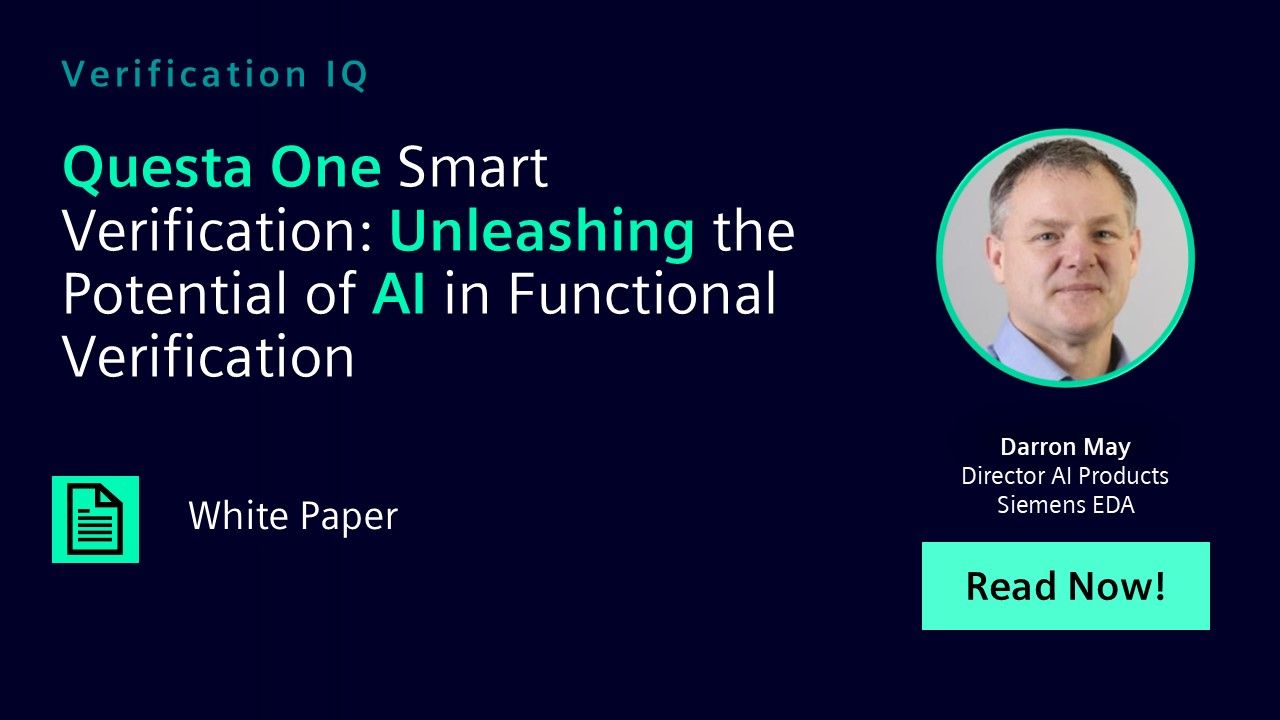Questa One Smart Verification: Unleashing the Potential of AI in Functional Verification
Exploring the potential of AI in verification, this whitepaper delves into the specific challenges the industry faces, showcases innovative solutions being developed, and highlights the successes of early adopters who have embraced these cutting-edge technologies. This transformative journey promises not only to enhance productivity but also to set the foundation for greater innovations in the future of functional verification.

-
Introduction
In today’s rapidly advancing digital landscape, the role of functional verification has never been more critical. As systems become increasingly complex, ensuring their reliability and performance poses significant challenges for both design and verification engineers. The stakes are high; verification failures can lead to costly recalls, safety risks, and damage to brand reputation. The latest Wilson Research numbers show right-first silicon falling to 14%, its lowest level since the study begun over 20 years ago, and 75% of ASIC projects are behind schedule. In response to these challenges, the industry is on the brink of a revolutionary shift driven by artificial intelligence (AI).
AI technologies are transforming traditional verification processes, enabling organizations to enhance accuracy, reduce time-to-market, and improve overall productivity. By leveraging data-driven approaches and machine learning (ML) algorithms, verification teams can gain insights that were previously unattainable and streamline workflows that have historically been time-consuming and error-prone.
Siemens Questa™ One Smart Verification techniques, powered by AI, are not merely incremental improvements, they represent a paradigm shift in how verification tasks are approached. Automated generation of RTL code, tests, assertions, coverage, predictive debugging capabilities, and intelligent analysis tools are just a few examples of how AI is being deployed to tackle the rigorous demands of functional verification. Verification workflows are interconnected by data and tools; this data holds untapped knowledge, and information is passed automatically between tools, enabling unprecedented productivity levels within electronic design automation.
As we explore the potential of AI in verification throughout this whitepaper, we will delve into the specific challenges the industry faces, showcase innovative solutions being developed, and highlight the successes of early adopters who have embraced these cutting-edge technologies. This transformative journey promises not only to enhance productivity but also to set the foundation for greater innovations in the future of functional verification.
-
Download Paper